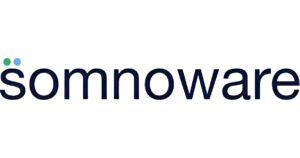Remember the days when sleep was uninterrupted bliss? Lately, it seems more like a distant memory. You’re not alone in feeling more tired than refreshed after a night’s rest. Many middle-aged individuals are unknowingly battling sleep apnea. It’s more than just loud snoring; this condition subtly saps our daily energy and poses long-term health risks.
Here’s where the transformative power of Artificial Intelligence (AI) comes in. Beyond powering the latest smartphones and smart homes, AI is carving out a significant role in medical care. Specifically, AI sleep apnea solutions are emerging as pivotal tools in diagnosing and managing the condition. Through the lens of AI, the path to reclaiming those restful nights and rejuvenated mornings becomes clearer and more attainable.
The Evolution of Sleep Apnea Treatments
19th Century:
- Inspiration from Literature: Sleep apnea’s early recognition is tied to the term “Pickwickian syndrome,” inspired by a character from Charles Dickens’s “The Pickwick Papers.”
1965:
- Medical Recognition: Sleep apnea was officially documented. Before this, treatments were rudimentary.
1981:
- CPAP Revolution: The introduction of Continuous Positive Airway Pressure (CPAP) therapy revolutionized obstructive sleep apnea (OSA) treatment.
Late 1980s:
- Advancements & Awareness: CPAP devices saw improvements. The public’s awareness grew, and specialized sleep clinics began emerging.
1970s to Early 2000s:
- Deepening Understanding: The focus shifted from symptoms to the root causes of obstructive sleep apnoea, leading to tailored treatments.
2010s onwards:
- Entry of AI: With advancements in technology, Artificial Intelligence began playing a role in sleep apnea diagnosis and treatment. AI-powered algorithms started analyzing vast amounts of patient data to predict and diagnose OSA with greater accuracy. Wearable tech integrated with AI began assisting in real-time monitoring, offering feedback to adjust treatment strategies.
Today:
- AI-Driven Personalization: The adoption of AI in the sleep apnea landscape has enabled more personalized treatments.
- AI-Powered Analysis: AI algorithms analyze sleep patterns to optimize therapeutic strategies.
- Real-time Adjustments: Smart CPAP machines use AI to adapt to pressures for individual patient needs.
- Inspire Machine: An innovative, AI-supported technology alternative to traditional CPAP treatments. Inspire offers a fresh approach without needing a mask or hose, focusing on a more seamless integration into the user’s life. It monitors breathing patterns and delivers gentle stimulation to maintain open airways during sleep.
From historical references to modern AI-driven solutions, the journey of sleep apnea treatments showcases the dedication to enhancing patient experiences and outcomes.
How AI Could Help With Sleep Apnea
Middle age is busy. Between work, family, and health, getting good sleep is crucial. But what if your sleep isn’t as refreshing as it should be? Thanks to Artificial Intelligence (AI), detecting sleep apnea has become much simpler.
1. Testing at Home
Say goodbye to those sleep clinic appointments. With AI gadgets, you can now check your sleep right at home. No wires, no fuss. Just wear the gadget, and it does the rest.
2. Catching the Small Signs
Sometimes, little changes in breathing can be hard to notice. But not for AI. It’s like a detective, always looking for clues that might mean sleep apnea.
3. Quick Results
Waiting for test results can take ages. AI is super fast. It looks at your sleep data and quickly tells you if something’s off.
4. Always Learning
The cool thing about AI? It learns from you every night. So, over time, it gets even better at understanding your sleep.
5. Checking Your Overall Health
Sleep is just one part of being healthy. AI can also look at other things, like your heart rate, to give a full picture of your health.
AI’s Role in Advancing Sleep Apnea Diagnosis and Treatment
Advancements in artificial intelligence (AI) aren’t just limited to self-driving cars or voice assistants. They’re making waves in the field of sleep medicine, too, bringing us more accurate diagnoses and tailored treatments. Let’s explore how some of the leading projects and solutions are reshaping the landscape:
Somnoware’s Data Solutions

Source: prnewswire
What is it?
Somnoware offers cloud-based software that uses AI to manage and analyze patient data related to sleep disorders.
Why it matters for middle-aged folks?
The platform allows for quick patient assessment home sleep testing, helping clinicians identify issues faster and prescribe appropriate treatments. This means if you’ve been struggling with sleep, a tool like Somnoware can speed up the process of finding a solution.
VirtuOx and Pulse Oximetry Data

Source: finder.tapintosleep
What is it?
VirtuOx provides diagnostic tools, including pulse oximetry tests, which measure oxygen levels in the blood—a key indicator of sleep apnea.
How it benefits you?
Their services are digital and can be used at home. By pairing this data with AI analysis, it gives a clear picture of your nighttime oxygen levels, highlighting any dangerous drops that might indicate sleep apnea.
Reykjavik University’s Sleep Revolution Project

Source: svefnsetrid
What’s the big idea?
Researchers are diving deep into the science of sleep, using machine learning and AI to analyze sleep patterns and discover new methods for treating sleep disorders.
What’s in it for me?
The project’s findings can pave the way for new, effective treatments for sleep apnea and other sleep-related issues. This means a better night’s sleep and improved overall health.
ProSomnus and Oral Appliance Design

Source: sleepreviewmag
What are they up to?
ProSomnus designs oral appliances for sleep apnea, and with the help of AI, they’re streamlining their designs to be more comfortable and effective.
Why should I care?
If you’ve tried a CPAP machine and didn’t like it, an oral appliance might be your next best option. Thanks to AI, these devices are becoming more tailored to individual needs, ensuring a snug fit and maximum efficacy.
Challenges and Potential Solutions in AI-driven Sleep Therapies
Reliability of Data Collection
Challenge: Just as we sometimes struggle to figure out new smartphones or apps, wearable AI devices might not always work perfectly. They might misread our sleep patterns if not worn correctly or if they malfunction.
Solution: Making devices user-friendly is key. Simple instructions, easier fitting methods, and better device calibration can help ensure accurate data collection. Plus, as AI learns more about our habits, these devices will continue to improve.
Data Privacy Concerns
Challenge: Remember the times when you wondered who could see the information on your Facebook or email? Similarly, with AI devices collecting personal sleep data, there’s a concern about who can access this info.
Solution: Companies are working hard to secure your data, using encryption and stringent data policies. Before using a device, it’s a good idea to read up on its privacy policy and ensure it meets your comfort level.
Over-reliance on Technology
Challenge: We’ve all experienced GPS systems leading us astray. Similarly, there’s a risk in relying too heavily on AI without human oversight.
Solution: While AI offers fantastic insights and solutions, combining its findings with expert reviews from other clinical sleep medicine specialists ensures a balanced and accurate approach to treatment.
Potential High Costs
Challenge: Just like the newest smartphones can be pricey, cutting-edge AI sleep devices might be out of reach for some due to their cost.
Solution: As these technologies become more mainstream, prices often decrease. Additionally, insurance companies might start covering more AI-driven sleep therapies as they recognize their benefits.
Adapting to New Treatment Methods
Challenge: Remember the switch from landlines to cell phones? Similarly, some might find it challenging to adjust to new AI-driven treatment methods after years of traditional treatments.
Solution: Educative workshops, user manuals, and customer support can help users transition smoothly. Having a tech-savvy friend or family member around can also be handy during the initial stages of using new devices.
In a nutshell, while AI-driven sleep therapies present some challenges, the potential benefits for improved sleep and overall health are immense. With time and continued innovation, many of these challenges will likely be addressed, making the treatments even more effective and accessible.
Final Thoughts
The journey of sleep medicine, particularly in sleep apnea, has come a long way. With the aid of Artificial Intelligence, the future seems brighter than ever. We’ve moved from cumbersome sleep studies to AI-driven diagnostic tools and treatments prioritizing efficacy and comfort.
If you’re intrigued by these developments and wish to keep abreast of the latest in sleep medicine, do consider diving deeper. One small but significant component of treatment, for instance, is ensuring clean, distilled water for CPAP machines. To explore this further and stay updated on the latest industry trends, visit CPAP Water and immerse yourself in a world of continual improvement and innovation. Remember, every breath counts, and with AI’s aid, each night’s sleep can become more restful and rejuvenating.
What are your thoughts on this matter? Share it with us!



